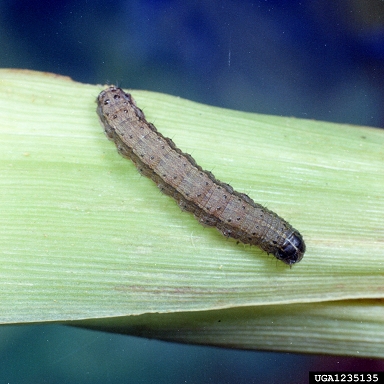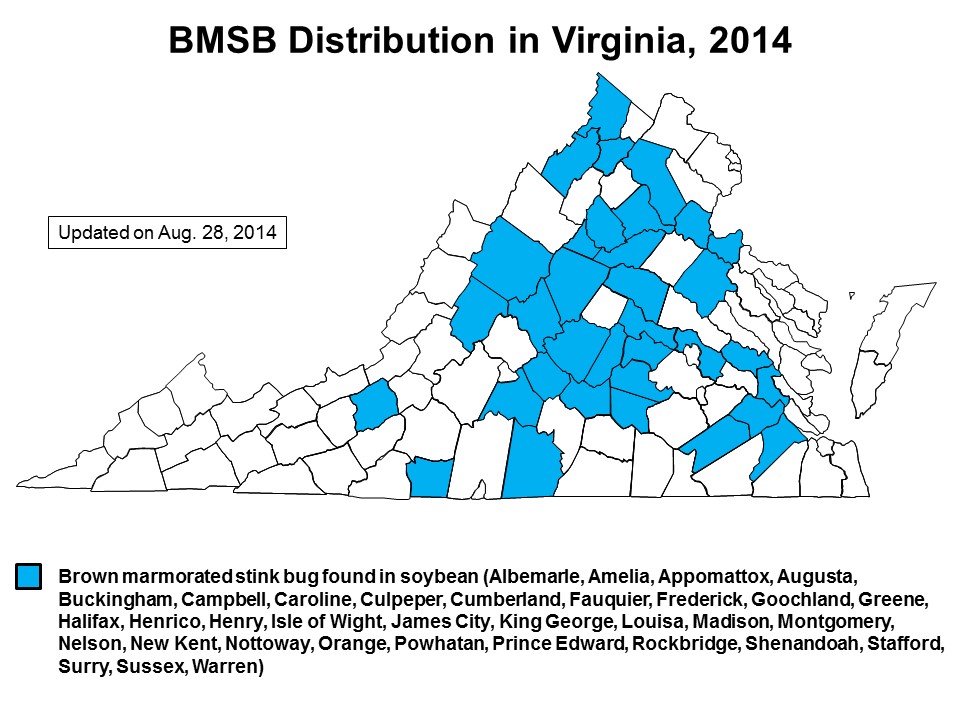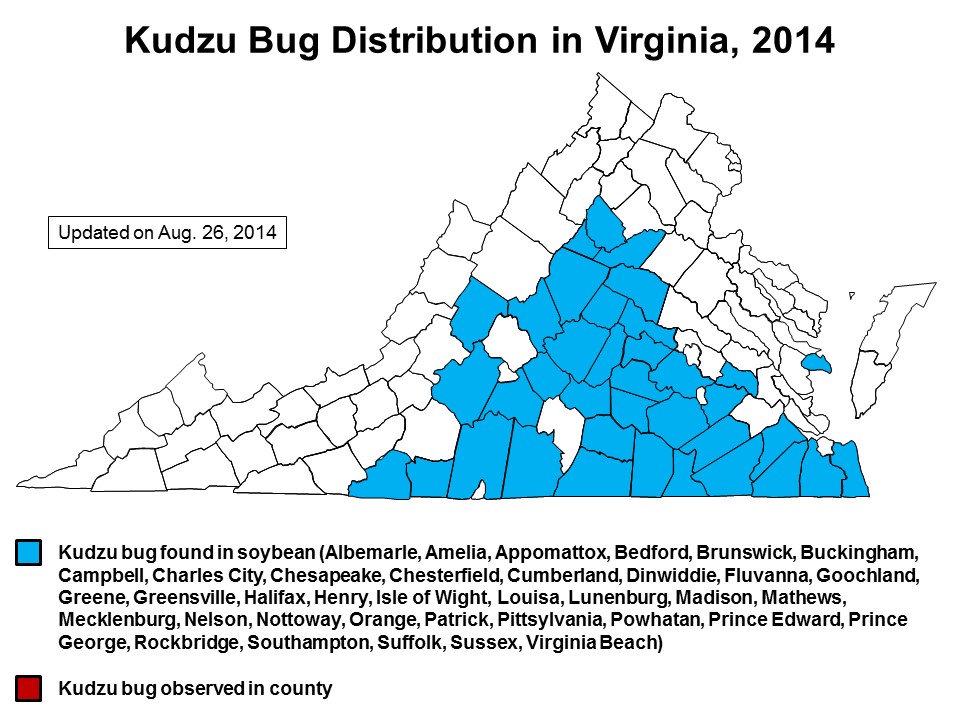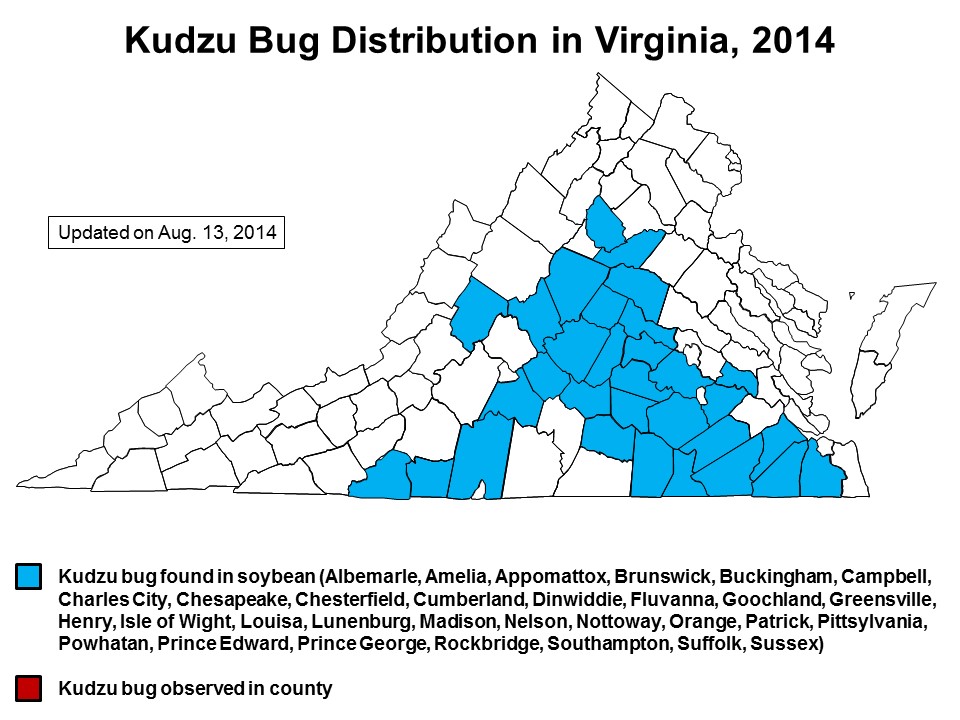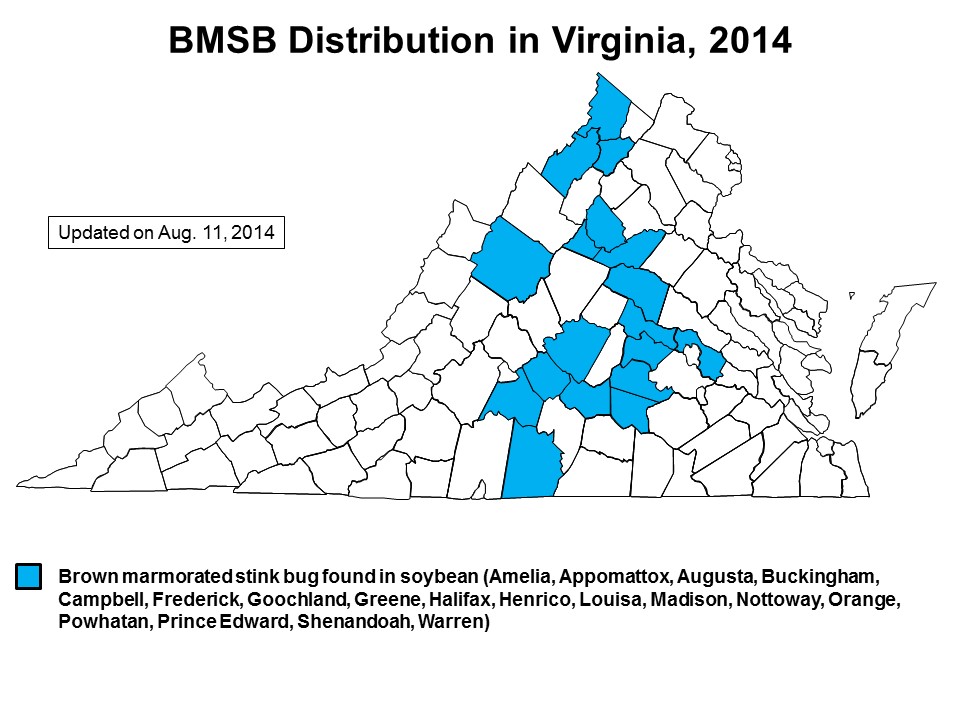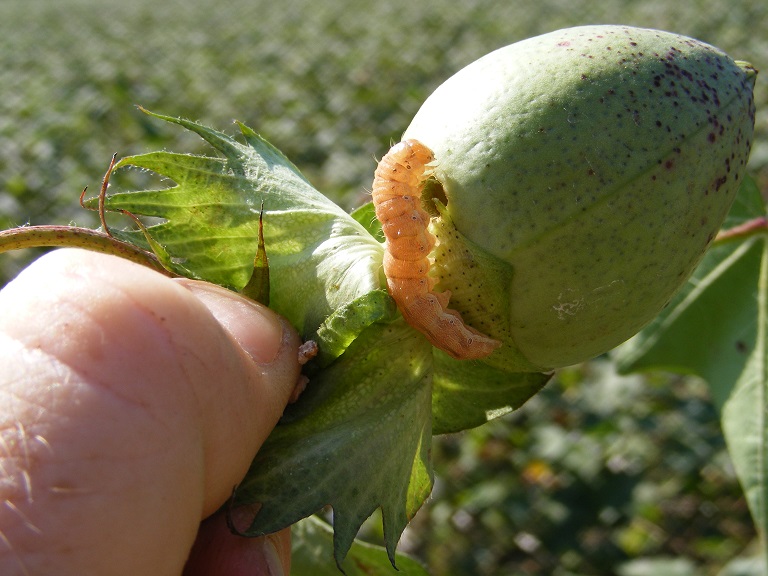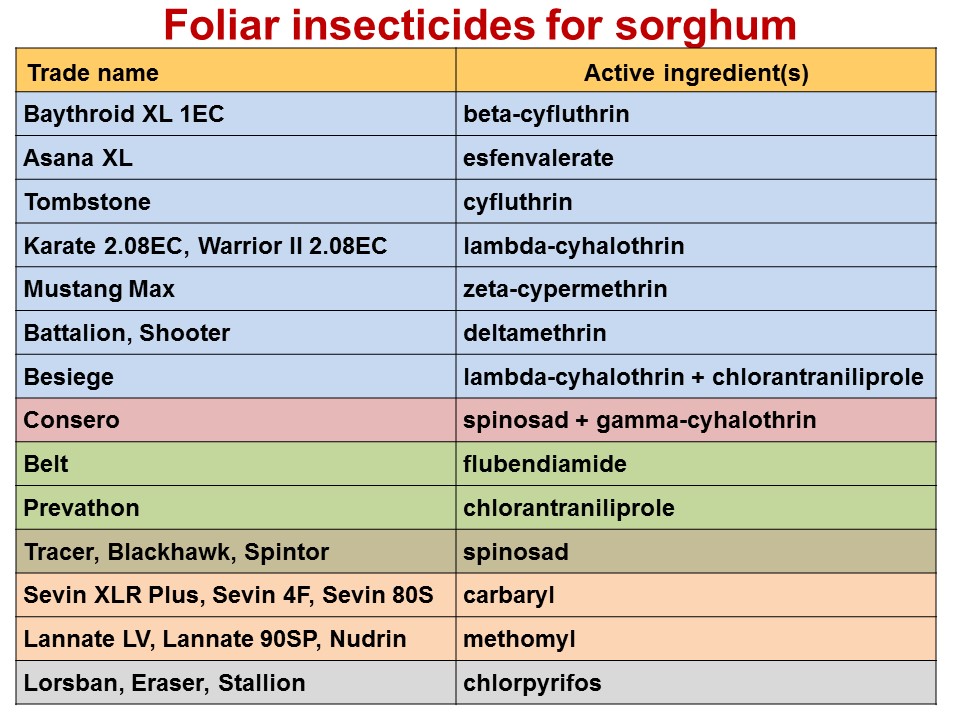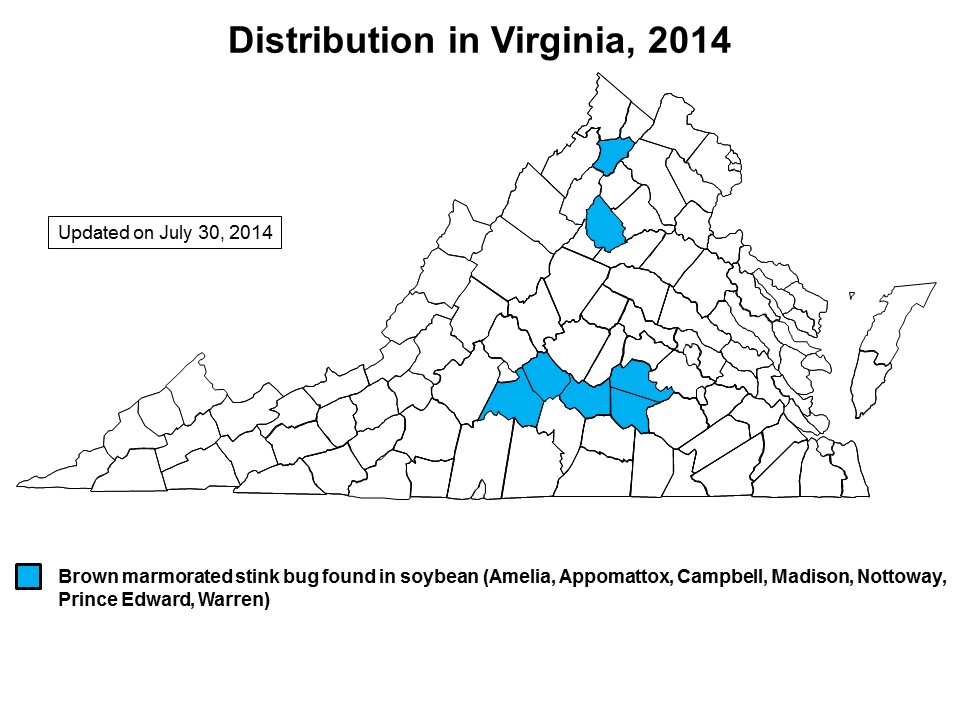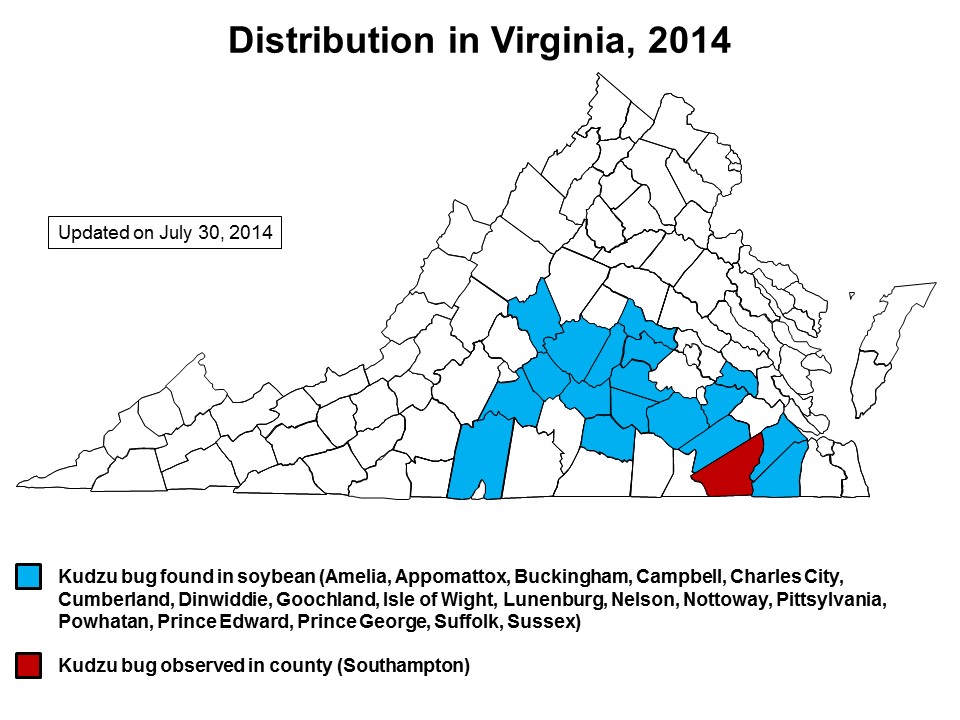We are getting reports of bollworm outbreaks and damage in cotton in areas of North Carolina, not far from the Virginia border. I know of no confirmed cases in Virginia, but fields should be checked over the next week or so. Although the corn earworm/bollworm moth flight has been extremely weak in Virginia, it may not be over. Corn is slow to dry down this year and may release another flush of moths. By now, a lot of bolls, the lower and first position bolls, are safe from worms—too tough for them to chew through. But there are still upper and outer position bolls that are soft and susceptible. We recommend scouting all fields, as we are hearing that the NC problem is occurring on several different varieties. 3% live worms or fresh worm damage is a good rule-of-thumb threshold.
Author Archives: Ames Herbert
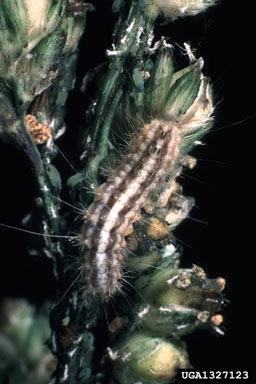
Worms in Sorghum
We received a sorghum head sample today from Dinwiddie County with sorghum webworm (see image on right). This is a known pest of sorghum and we have seen them before, but because of their smaller size compared to other head worm species, the threshold is an average of 5 per head across the field. To date, we have never seen nearly this many in any field, but this is a pest that should be scouted for. We are also seeing a very large number of fall armyworm moths in our pheromone traps here at the Tidewater Center. Fall armyworm is another sorghum head pest (see the image below), along with corn earworm, and the threshold for these species is an average of 2 per head. We recommend scouting sorghum fields until heads have hardened seeds. If fall armyworm is found in threshold numbers and a treatment is needed, pyrethroids will not do the job. The best results will be with non-pyrethroids like Belt, Prevathon or Besiege.
Brown marmorated stink bug (BMSB) and kudzu bug (KB) in more counties but numbers still very low
We are still finding BMSB and KB in new places—7 new counties for BMSB (Sussex, Albemarle, Cumberland, New Kent, King George, Isle of Wight, and Surry), and KB in 3 new counties (Mathews, Mecklenburg, and Virginia Beach)—but numbers in all locations are way down compared with last year (see the maps below). No fields are at threshold for either pest, but a couple of fields were identified in James City County that have some infested edges. The full season crop is going to be safe from injury soon, when plants grow through the R6 stage. As the season moves into late summer and early fall, double crop fields will provide one of the few good late season food sources for all stink bug species—so they will need to scouted until they are safe from injury.
Update on kudzu bug and brown marmorated stink bug
We are providing updated maps of the distribution of kudzu bug and brown marmorated stink bug in Virginia. Although we have added a few new counties since last week, overall the populations of both of these pests are very low compared with last year. To our knowledge, no soybean fields have even come close to reaching threatening levels or thresholds.
Most kudzu bug egg masses that we are finding have already hatched indicating that the second generation is occurring. This pest has only two generations so if this second generation stays small, as it appears, we may not have to treat any fields this year.
Brown marmorated stink bug levels are very low. Although a few can be found in many fields, none are reaching high levels. All of this is good news for growers. But, the season is far from over so stay vigilant.
Cotton aphids found in North Carolina
I have gotten several calls reporting that aphid infestations are occurring in some cotton fields in northeast North Carolina. To my knowledge, none have been reported from Virginia, but growers should be alerted.
In the ‘old’ days before Bt cotton, we typically treated cotton twice in August with pyrethroids for bollworm. During those years is was not uncommon to see aphid ‘flares’ after those two sprays. We know from ongoing research in soybean that pyrethroids are pretty devastating to most natural enemies (the many insects and spiders that attack and eat pest species). We presumed that the bollworm sprays were suppressing natural enemies and ‘allowing’ cotton aphid populations to build. So, is that what is going on this year in cotton? We cannot be sure or course, but more growers are treating two, even three times for plant bugs and stink bugs, and in most cases they are using pyrethroids. Are these reported aphid flare-ups related to multiple, close-interval pyrethroid sprays? We cannot be sure but if this is the beginning of a trend, we need to reconsider some things, like—are all of the plant bug and stink bugs sprays warranted and based on actual insect pressure; could some be eliminated; should we be using neonicotinoid insecticides (which can help suppress aphids), either tank mixed or as combination products, for one or more of these sprays?
All good questions that will have to be addressed if the aphid situation gets worse. Flaring a bad aphid problem will require more sprays, more money, and more bother. We need to do whatever we can to prevent this problem.

Corn earworm update: cotton and soybean
Corn earworm moth activity is up from last week. We are definitely at the front edge of the movement from corn, which is typically our biggest flight each summer. We are continually testing moths for tolerance to pyrethroids and have included the updated line graph showing percent survivorship to date in our AVT program. Although bouncing a bit, to date we have tested 371 moths with an overall 31% survival rate. This level of survivorship is pretty consistent with what we have been seeing over the past few years and warrants some consideration when selecting your insecticide.
SOYBEAN: Worms are just beginning to show up in a few soybean fields, although numbers are very low, well below threshold. Fields in the R5-R6 stage should be scouted over the next few weeks. Use the recently revised Corn Earworm Calculator (…) to determine if your fields are at threshold.
COTTON: We found corn earworm (=bollworm) eggs in some fields in this area at what was the ‘old’ pre-Bt cotton threshold towards the end of last week. In those pre-Bt cotton days, this egg threshold was used to time the first of a two-spray system: at egg threshold and again in 5-7 days. Of course this system was supplanted by the advent of Bt cotton varieties. With our current dual-insect-trait cotton varieties, as a standard program we have recommended treating fields 1) if 3% of a random sample of bolls shows either live worms or fresh worm damage, or 2) if not scouted, 7 days after the ‘old’ egg threshold has been found in yours or nearby fields.
We have recommended this single application to dual-insect-trait cotton for several years now based on ongoing field trials that show that leaving cotton untreated can often result in levels of boll damage that exceed the 3% threshold. The amount of this ‘slippage’ of the Bt traits varies a lot from year to year depending on the level on bollworm pressure. In years with high populations, we have seen as much as 9-10% boll damage in some varieties (if not treated). Last year was just the opposite. We had a VERY lackluster bollworm infestation and most varieties stayed at less than 3% damage even without an insecticide spray.
This year is still a bit iffy in terms of what we can expect. As mentioned above, the moth flight is increasing, but is still low compared to some years. If you do make an application for bollworm, with the level of pyrethroid survivorship we are seeing, you should consider using a non-pyrethroid like Belt, Prevathon, or Blackhawk, and be sure to include a product like Bifenthrin or Bidrin that targets any lingering stink infestations. Besiege is another good choice since it contains both a non-pyrethroid and Karate. These are just few of the labeled options, and as always, check labels for rates and use information.

Headworms showing up in sorghum
We are getting reports of a few worms in young sorghum heads. ‘Headworms’ are key insect pests of sorghum in Virginia and can include a complex of species but primarily corn earworm and fall armyworm. In years with heavy corn earworm moth flights and infestations in soybean and peanut, sorghum is also at high risk of being infested. Although we are experiencing a generally weak corn earworm moth flight so far this year, because sorghum is such an attractive host, fields should be checked.
Stay in touch with the status of the corn earworm flight via the new Virginia Ag Pest and Crop Advisory Blog (http://blogs.ext.vt.edu/ag-pest-advisory/). You can view postings at this website, or if you want to receive the weekly advisories via email, go to the Blog site and sign up.
So what are the worm thresholds for sorghum, what is the best way to scout, and what products are labeled for control—all good questions.
We have learned that the best way to sample sorghum heads for worms is with a 5-gal bucket, preferably white. Relying on visual inspection of heads does not work well because you cannot easily see the small worms or even big ones if they bury themselves deep into the heads. Bending the heads into the bucket and vigorously shaking/slapping them does the job—dislodges the worms into the bucket. Worm infestations are not always uniformly distributed across a field so we recommend sampling 10 heads in 10-20 different locations in a field.
Because of differences in variety, planting date, soil moisture, and other factors, different fields may have heads at different maturity stages so keep this in mind and focus scouting efforts on fields with heads in these most susceptible stages—from soon after flowering when seeds begin to form until seed are hardened.
The most common threshold across the southern and central states is to treat when worms average 2 or more per head. This is a good starting point.
A final note, a broadcast spray pattern is probably the least effective way to achieve a good worm control. Treatments will be more effective if you can set up a boom with a nozzle over the row, or multiple nozzles to direct the spray to heads, only, and deliver 12-15 gal per acre. The table below provides a fairly comprehensive list of insecticides labeled for use in sorghum. We have generally achieved the best control when we have included a non-pyrethroid like Belt, Prevathon, Besiege, or Blackhawk. Check labels for rates and other use information.
Brown marmorated stink bug update for soybeans
As of this week, brown marmorated stink bug adults, nymphs, and egg masses are beginning to show in a few soybean fields in seven counties (Madison, Warren, Campbell, Appomattox, Prince Edward, Amelia and Nottoway). Number are still very low but more are expected as they move from border trees into fields. This early movement is coinciding with the maturity of the soybean crop. Most of the plants in the infested fields are in late R3-early R4 growth stages. When plants reach the R5 stage (seed fill), they will become even more attractive to stink bugs that target young seed to feed on.
Kudzu bug update for soybeans
The number of counties where kudzu bugs have been found in soybean fields has increased a lot since last week. Last week they were found in 4 counties and this week a total of 18 counties. In many cases both nymphs and adults are present. To my knowledge, none have reached the threshold for this second generation, that is, 1 nymph per sweep. Keep in mind that as much time as we put into this statewide survey of soybean fields, our scouts can only visit a small fraction of the fields. Our recommendation is that you check all of your fields. The best way is to use a standard sweep net doing several 15 sweep samples in a field. If you need a sweep net, here is one recommendation (there are several other sources): Bioquip, the sweep net with the 2 ft long handle, item #7625HS (https://www.bioquip.com/search/DispProduct.asp?pid=7625HS). Note that the site lists two handle lengths, again, we recommend the one with the 2 ft long handle.
Corn earworm update—slow to develop but some surviving the pyrethroid vial test
The corn earworm population is very slow to develop this year. We are only getting a couple of moths each night in our black light trap here at TAREC and our pheromone trap catches are way down compared to this time last year.
Sean Malone will be posting the results of our annual corn earworm field corn survey later this week. Those results, the percent of ears damaged by corn earworm, give us the best indication of what to expect in the coming weeks. Worms feed in corn, drop the ground to pupate in soil chambers, then adults (moths) emerge to fly to other hosts like soybean, cotton and peanut fields. So the size of the population in field corn is our first indicator of what the season may bring.
As in past years, we are also subjecting moths to the AVT (Adult Vial Test) with a pyrethroid insecticide. With the low population, mentioned above, we have not tested a lot of moths but the survivorship numbers are high 13-46 percent. I cannot forecast if this will increase as the season progresses, as it has in the past, but starting at this level is significant. Given these early results, regardless of the crop growers should be prepared to use some non-pyrethroid product ‘designed’ to target difficult to control corn earworms. These can be used alone, or tankmixed with a pyrethroid if other pests like stink bugs or kudzu bugs need to be controlled.

